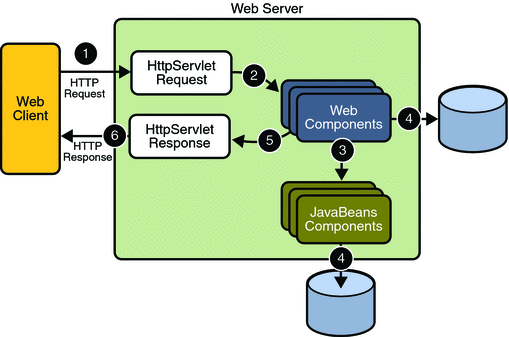Overview of Web Application Security
In the Java EE platform, web components provide the dynamic extension capabilities for a web server. Web components are either Java servlets, JSP pages, JSF pages, or web service endpoints. The interaction between a web client and a web application is illustrated in Figure 30–1.
Figure 30–1 Java Web Application Request Handling

Web components are supported by the services of a runtime platform called a web container. A web container provides services such as request dispatching, security, concurrency, and life-cycle management.
Certain aspects of web application security can be configured when the application is installed, or deployed, to the web container. Annotations and/or deployment descriptors are used to relay information to the deployer about security and other aspects of the application. Specifying this information in annotations or in the deployment descriptor helps the deployer set up the appropriate security policy for the web application. Any values explicitly specified in the deployment descriptor override any values specified in annotations. This chapter provides more information on configuring security for web applications.
For secure transport, most web applications use the HTTPS protocol. For more information on using the HTTPS protocol, read Establishing a Secure Connection Using SSL.
- © 2010, Oracle Corporation and/or its affiliates
